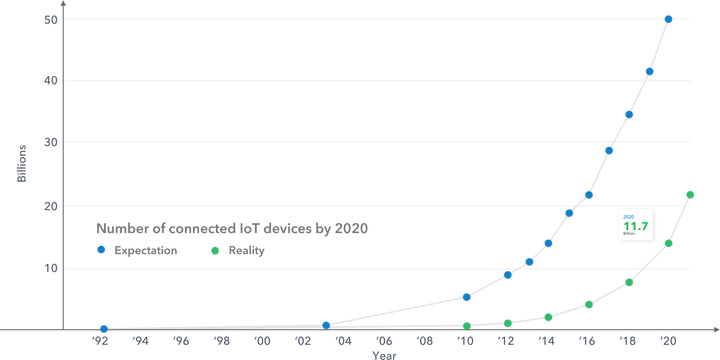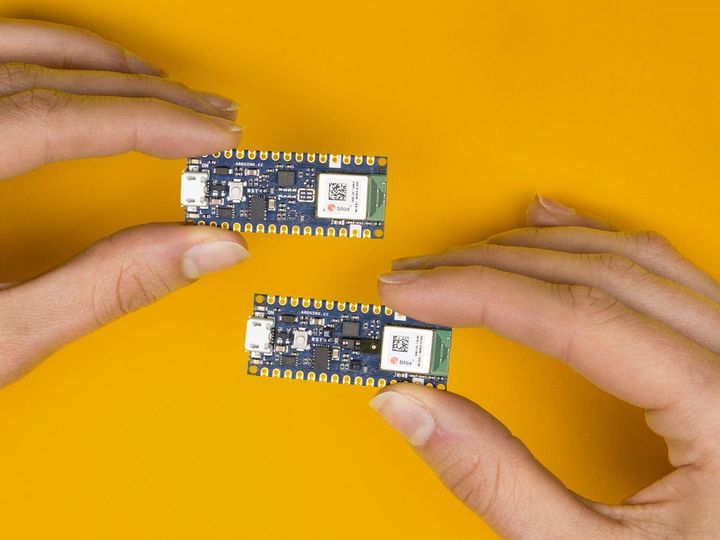6 Essential Steps for Getting into IoT Product Management

If you're interested in becoming an IoT Product Manager, it's no surprise. The buzz around what has been dubbed the 'Fourth Industrial Revolution' is not merely hype. With estimates of the number of connected devices by 2020 ranging from 20 to 50 billion and more, the opportunity to get involved in the field is one worth taking no matter if your background is in hardware product management or as an IT support provider.
There are several different routes into IoT Product Management but they all require taking the following 6 essential steps:
1. Enroll on any necessary training courses
The best place to start in your mission to secure an IoT Product Management role is by looking at existing job descriptions. Once you've read through a few of these you will get to know the essential skills and experience required.
Of course, no one will be asking for multiple years' experience in IoT Product Management as it is a very new field. However, you will be expected to have some sort of experience in product management in another field (e.g. hardware, software, etc.) as these skills are transferable.
By looking at the commonly requested desirable and essential requirements, you will know whether you need to start a full-time college course, take some short courses, book some work experience or carry out a mixture of these.
A Bachelor’s degree in Business, Engineering or Computer Science is a great way to start. If you already have this under your belt, working towards your Master's degree is a great idea. If you already hold a Master's, look out for work experience or specialist courses in a field you are interested in.
For example, if you are fascinated by household IoT applications, take a short course on lighting controls or camera systems. If you are fascinated by the potential of combined IoT and blockchain solutions, take a course on blockchain tech.
Don't forget your soft skills either. If communication or business strategy aren't your strong points, find a course or program to improve them.
2. Understand the full IoT production stack
Whatever product management experience you have had in the past, bear in mind that the IoT will require a very different set of processes. Producing IoT technology involve co-ordinating many layers of technology and if you are in charge of end-to-end production it is like managing a portfolio of five different but related products.
Even if you are only working on one component of an IoT product, you may be expected to co-ordinate with other Production Managers.
The IoT production stack includes the following 5 layers:
- Device hardware
- Device software
- Communications protocols
- Cloud platform
- Cloud application
You will need to be able to hold a meaningful conversation with fellow Production Managers working with each of these layers. For a detailed explanation of each of the IoT stack, see the linked article.
3. Leverage (or develop) one level of the stack
So you have all the essential and many of the desired qualities for an IoT role and have a good understanding of the IoT stack. To really impress your target company, you should also have an in-depth knowledge and experience in one or two of the five stack layers. This has given rise to the term 'T-Shaped' Production Manager, referring to the combination of a broad 'horizontal' stack knowledge and the deeper, 'vertical' layer expertise.
As an example, if you have experience and knowledge in developing mobile applications, your specialism will be in the cloud platform and cloud application layers. If you have built cameras or sensors before, device hardware and software will be your forte.
Highlighting this expertise and deepening it where possible will look good to prospective employers.
4. Focus on a familiar industry (where possible)
So far we have focused on the skills and knowledge needed to perform the IoT Product Manager role. However, on top of these IoT specific factors, the successful applicant will need to understand the industry they are working in. If you already have experience in healthcare, wearables, energy, manufacturing, agriculture, retail, smart homes or even something niche like drone technology, try looking for IoT Product Management positions in that sector first. You could well get the nod over someone with no previous sector experience even if their IoT-specific knowledge is slightly better than yours. After all, you should be able to use familiar industry terminology and discuss hot topics during the interview. This ability to connect with interviewers can go a long way!
5. Understand your options
The seemingly huge number of different types of company getting involved in IoT can be confusing. What you need is a way to categorize these companies into groups.
The easiest way to do this is to divide IoT companies into three overlapping groups. Overlapping is the operative word since many of the companies you come across will have their feet in different camps.
The easiest to understand are IoT product suppliers. These can be further split into end-to-end suppliers which provide fully integrated IoT products and cover the entire stack. Other suppliers focus on providing one or more components of IoT devices. This might include sensors, communication protocols or cloud analytics services, for example. You should be able to see how your chosen specialism might push you in one direction over another.
Second, there are IoT service providers. An example might include an IT consulting firm specializing in IoT consulting. Some will focus on outsourcing IoT development. Others will be more hands on and involved in implementation, deployment, asset management and other field services. Of course, a budding IoT Product Manager will need to choose a firm that also produces its own products!
A third option is working for a team that is creating IoT products to improve their own performance. For example, companies in the industrial sector are expected to be investing heavily in IoT to improve their processes and IT services. They will need IoT Product Managers to drive this.
6. Reach out to existing professionals
Who better to advise you on what it takes to be an IoT Product Manager than someone already in that role. At the time of writing this article, LinkedIn alone displayed over 500,000 results for 'IoT' in 'People.' A variety of roles came up including Business Directors, CTOs, Senior Consultants and Specialist Recruiters.
Trade fairs and online forums are another place to bump into IoT professionals and you may find people of note among the pages of IoT industry magazines or in the contacts section of IoT blogs (which you should be reading of course!)
By following the above 6 steps you will be giving yourself an advantage in the hunt for your first IoT Product Management role. Good luck! An exciting future awaits those who get into this booming industry.
About the author “Brent Whitfield”
Brent Whitfield is the CEO of DCG Technical Solutions Inc. DCG is specialized in providing IT Services in Los Angeles. Brent has been featured in Fast Company, CNBC, Network Computing, Reuters, and Yahoo Business.


